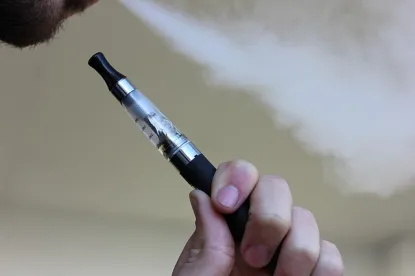A new paper co-authored by fifteen past presidents of the Society for Research on Nicotine and Tobacco (SRNT) and published in the American Journal of Public Health encourages the media, legislators, and the general public to re-evaluate negative attitudes toward vaping. Kenneth Warner, lead author and dean emeritus and the Avedis Donabedian Distinguished University Professor Emeritus at the University of Michigan’s School of Public Health, explained that the potential for vaping to increase smoking cessation has been largely overshadowed by media coverage and policies that are too focused on the potential risk of vaping by teens.
Warner and the fourteen co-authors represent a sizeable majority of past presidents of SRNT, one of the world’s leading and most respected organizations dedicated to nicotine and tobacco research. When asked why the group decided to write the article, Warner pointed to the divisiveness of the issue, and a desire from the authors to “inject some sense of balance, to get public health organizations, the media and legislators to recognize that their appropriate but singular desire to keep e-cigarettes out of the hands of kids may actually be harming public health.”
Some highlights of the article include:
-
A call for a rebalancing of society’s consideration of vaping, specifically increasing focus on its potential to increase smoking cessation. The desire to decrease young people’s use of e-cigarettes shouldn’t necessarily overshadow the 480,000 Americans who die annually as a result of smoking.
-
While vaping is not free from risks, it is substantially less dangerous than cigarette smoking. Evidence demonstrates that vaping can increase smoking cessation and is likely more effective than FDA-approved nicotine replacement products like gum and patches. A majority of Americans – including smokers – believe that vaping is just as dangerous, if not more dangerous, than cigarette smoking. The authors contend this is due in part to media coverage, 70% of which mentioned vaping risks to kids while only 37% noted the potential benefits for adult smokers. As a result, a singular focus on the welfare of kids serves as a detriment to adult smokers who could benefit from vaping.
-
Vaping risks for kids are real, but evidence of the percentage of kids becoming addicted to nicotine by vaping is much smaller than popularly believed. Smoking rates among adolescents and young adults have fallen at unprecedented rates at the same time as vaping exploded in popularity. This contradicts the idea that vaping increases smoking.
-
The article points to policy changes on flavored products and taxation changes as ways to re-balance the approach to e-cigarettes. Adults enjoy flavored products just as much as kids do, and the focus should be on restricting access to those products by kids and not outright bans on flavors. This would allow adults to get the flavored products they want to aid in their attempts to quit smoking. Additionally, the article suggests moving away from efforts to “equalize” taxation of vaping products with combusted tobacco products. Instead, making cigarettes more expensive while moderately taxing vaping products would encourage adults who don’t quit smoking to switch to e-cigarettes.




 />i
/>i

